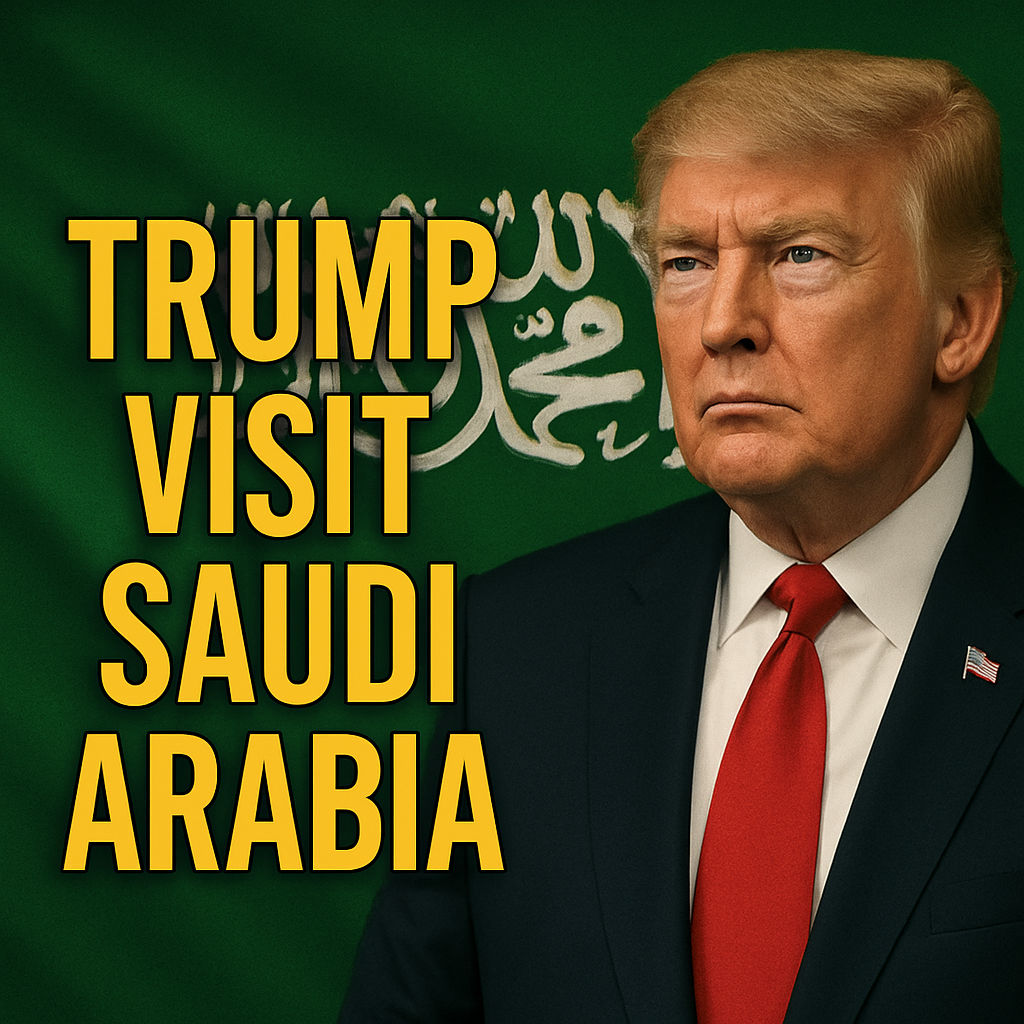

By Lol242 World News Staff Writer
In May 2017, the world watched with raised eyebrows and bated breath as President Donald J. Trump kicked off his first foreign trip with a surprising, and historic, stop: Riyadh, Saudi Arabia. It wasn’t just any state visit. It was a meticulously orchestrated spectacle, dripping in gold, symbolism, and geopolitical ambition. And in true Trump fashion, it was big, bold, and brimming with deals.
Fasten your seat belts, because this wasn’t just another meet-and-greet with Middle Eastern monarchs, it was a pivotal moment that reshaped America’s role in the region, challenged traditional alliances, and sent global shockwaves through diplomatic circles. Here’s why it mattered, not just for the U.S. and Saudi Arabia, but for the entire planet.
 TRUMP LANDS IN RIYADH: RED CARPET ROYALTY AND A STRATEGIC WARM EMBRACE
TRUMP LANDS IN RIYADH: RED CARPET ROYALTY AND A STRATEGIC WARM EMBRACEDonald Trump stepped off Air Force One in Riyadh like a man on a mission. Greeted by King Salman and surrounded by sword-dancers, falcons, and luxury beyond imagination, the optics were clear: this was a reset. After years of tension between the Obama Administration and Gulf monarchies over issues like the Iran nuclear deal and human rights criticism, Trump’s message was: America is back, and we’re bringing business.
 $110 BILLION IN ARMS DEALS? DEAL!
$110 BILLION IN ARMS DEALS? DEAL!One of the most headline-grabbing outcomes was the announcement of a whopping $110 billion arms deal, a combination of finalized and proposed agreements between the U.S. and Saudi Arabia. The package included tanks, helicopters, missile defense systems, surveillance tech, and more. For Trump, it was touted as a massive job creator and a signal of strengthened ties with one of America’s oldest Gulf allies.
For critics? It was a dangerous green light to a kingdom involved in a deeply controversial war in Yemen.
 THE ISLAMIC SUMMIT: TRUMP’S “SPEECH TO THE MUSLIM WORLD”
THE ISLAMIC SUMMIT: TRUMP’S “SPEECH TO THE MUSLIM WORLD”Standing before more than 50 leaders of Muslim-majority countries, Trump delivered what some called his “Muslim World” speech. But instead of the olive-branch tone of Obama’s 2009 Cairo address, Trump’s speech was blunt and strategic.
“This is not a battle between different faiths… this is a battle between good and evil,” Trump declared.
He called on Muslim nations to “drive out” extremists and terrorist networks from their societies, a shift in tone from his campaign rhetoric that had been accused of being anti-Muslim. The Middle Eastern leaders, many authoritarian, loved it. He wasn’t preaching democracy. He was preaching partnership.
This moment was a major signal: Trump’s foreign policy was about interests over ideals, alliances over criticism, and cash over caution.
 WHAT IT MEANS FOR AMERICA
WHAT IT MEANS FOR AMERICAThe visit marked a significant pivot in U.S. Middle East policy. Trump was repositioning the United States as an unapologetic supporter of Saudi power, especially as a counterweight to Iran.
For U.S. defense contractors and energy companies, the deals were a dream. For Americans concerned about human rights, war, and the balance of power in the region? It raised eyebrows.
This also hinted at the Trump Doctrine, transactional diplomacy, big symbolic gestures, and a realignment that prioritized immediate gains and influence over long-term stability.
 THE GLOBAL RIPPLE EFFECT
THE GLOBAL RIPPLE EFFECT THE IRAN-SAUDI TENSION ESCALATES
THE IRAN-SAUDI TENSION ESCALATESBy embracing Saudi Arabia so openly and demonizing Iran in his Riyadh speech, Trump inflamed the Sunni-Shia power struggle that already divided the region. Tehran saw the visit as a threat, and tensions soared.
 THE PALESTINIAN-ISRAELI PEACE PUSH?
THE PALESTINIAN-ISRAELI PEACE PUSH?From Riyadh, Trump flew to Israel and then the West Bank, trying to sell himself as the ultimate dealmaker. Though nothing major came of it, the optics of a U.S. President moving directly from Saudi Arabia to Israel (something no president had done before) were dramatic. It was a message of unity against extremism, but also a fragile balancing act between regional rivals.
 THE YEMEN WAR AND HUMAN RIGHTS SILENCE
THE YEMEN WAR AND HUMAN RIGHTS SILENCEThe arms deal directly empowered Saudi Arabia’s military campaign in Yemen, a war that’s since become one of the world’s worst humanitarian crises. Critics accused the U.S. of enabling war crimes by proxy. For Trump, that criticism didn’t stick, the deal was a win, and the strategic alliance was all that mattered.
 THE CRITICISM & CONTROVERSY
THE CRITICISM & CONTROVERSYWhile many Middle Eastern leaders praised Trump’s forthrightness and willingness to talk business, the visit sparked fierce backlash in other quarters:
Human rights advocates slammed the U.S. for cozying up to autocrats with questionable records.
American media outlets pointed out the stark hypocrisy between Trump’s anti-Muslim travel bans and his royal reception in Riyadh.
Democrats and foreign policy traditionalists worried the U.S. was selling its moral authority for short-term gains.
 WHAT IT ALL MEANS TODAY
WHAT IT ALL MEANS TODAYLooking back, Trump’s visit to Saudi Arabia was more than just a flashy photo-op it was a geopolitical statement. It reoriented the U.S. toward Saudi Arabia and the Gulf monarchies, ramped up pressure on Iran, and shook up traditional Western alliances with a more unilateral, hard-nosed approach.
It also opened a Pandora’s box of questions:
Can the U.S. balance arms sales with global stability?
Is the Middle East better off with stronger U.S.-Saudi ties, or more divided than ever?
Was Trump’s approach a bold realignment, or a reckless gamble?
One thing’s for sure: the visit was pure Trump a mix of spectacle, strategy, and shock value. And like many of his decisions, the full impact may not be clear for years to come.
What do you think? Did Trump’s Saudi trip secure America’s influence or set the world up for deeper divisions? Drop your thoughts in the comments below!
Stay tuned to Lol242.com for more bold, unfiltered takes on global politics.
